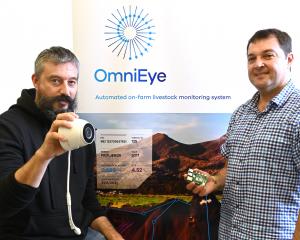I took a step into the virtual future of sports last week. I'm glad I got to look around, but it didn't take long before I was ready to high-tail it back to the real world.
Last week, the Golden State Warriors season opener against the New Orleans Pelicans became the first ever sporting event to be live streamed in virtual reality video to the public.
In a small room in the bowels of Oracle Arena, some fellow journalists and I took turns using the Samsung Gear VR headset to watch the Warriors' pre-game championship ring ceremony and then the contest itself.
Frankly, it was an awful experience. But it gave a glimpse - however blurry, halting and headache-inducing - of how we might enjoy sporting events and interact with our favorite teams in the future.
As NextVR co-founder D.J. Roller put it, "This is the worst VR experience you'll ever have." It can only get better from here.
For all the buzz around the technology, what with VR systems from Facebook, Samsung, Sony and HTC slated to hit the market over the next year, it still needs refining. A lot of refining, if my experience was any indication.
The video started and stopped. The app quit if you inadvertently pushed a button on the side of the headset and had to be restarted by removing the phone from the headset. Every so often, the phones overheated and had to be turned off and set aside to cool.
Even when the phones and the virtual video were working properly, the experience was poor. Although the cameras shooting the virtual video were placed courtside, the view of the players and the court was so fuzzy that it was like being a nearsighted person watching a game without glasses. The angle of view inside the headset was so narrow as to feel like the game was being viewed through a tunnel.
And because the position of the camera didn't allow you to see the scoreboard and the producers decided not to overlay any graphics on the screen, it was impossible to know how many points Steph Curry had scored in his stellar first quarter (24) or even the score of the game!
Even setting all those issues aside on the grounds that it's still early days in VR, the basic setup left a lot to be desired. Wearing a headset - the only way to deliver a VR experience for the time being - isolates you from the people around you, making it hard to enjoy a game with your friends in the room.
It also can cause physical fatigue. And having a screen set that close to your face can cause eye strain or worse. In my case, watching the VR stream gave me a headache that didn't go away until the next morning.
While at the demo, I kept taking off the headset and seeing the game playing on a flat-screen high-definition TV in the same room and wondering why anyone would ever prefer the virtual version.
And yet, now that my headache has subsided and I've had time to reflect, it doesn't seem so crazy that virtual reality might eventually be the way that many people interact with sports and their favorite teams.
Take a look at how Web video has progressed. When I started my career nearly 20 years ago, video streaming was in its infancy, and it was awful.
The video streams were tiny and in low resolution. Because of bandwidth constraints, producers often had to choose between offering smooth video that was so blurry it was almost unwatchable or somewhat sharper images at such slow frame rates that it was almost like watching a photo slide show. The only alternative was to allow users to download videos, but slow Internet speeds meant that users had to wait long periods to watch even short clips.
But today the Internet is becoming the premier way to distribute and watch video. You'll find far more choices online than you will over the air or through your cable box. And if you want to watch something in ultra-high resolution or 4K, you pretty much need to go to places like Netflix or Amazon, because you won't be able to find it through Comcast.
Similarly, virtual reality technology will improve, and soon. The virtual reality headset being produced by Facebook's Oculus unit will debut next year and offer much sharper, higher-resolution images than what I saw on the Gear VR. The processing of those virtual images will be done on a high-end PC, not a mobile phone processor, so it shouldn't face the same overheating problems.
As Internet speeds increase and faster wireless networks roll out in coming years, they should be able to handle the bandwidth needed to send smooth, high-definition virtual reality video streams.
And in the more distant future - say 10 years from now - advanced displays may allow you to step into virtual reality without having to wear a headset. You could be resting on your couch in your own living room with no bulky headgear on and still feel like you are sitting right near the action with a roaring crowd all around you and your best buddies right next to you - virtually, of course. It would be something like the "Star Trek" holodeck - and very, very cool.
What makes me particularly optimistic about VR is that despite its problems, it offers a completely different experience than you can get anywhere else.
When you step into a virtual world, you soon become immersed in it. It can make you feel like you are in places you've never been or doing things you've never done. Even in its rudimentary form, it's really powerful.
Because of VR's current limitations, I'm dubious that there will be lots of people wanting to watch entire virtual sports games anytime soon. They're going to want to take off the headset long before the contest is over.
But it's going to be great for showing people things such as what it's like to make a thunderous dunk in a basketball game or to catch a ball thrown by San Francisco Giants ace Madison Baumgarner.
And in the future, well, virtual reality could be the way we watch sports. Like Web video before it, it just needs some time to mature.
- by Troy Wolverton












